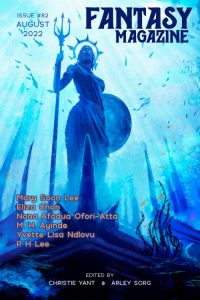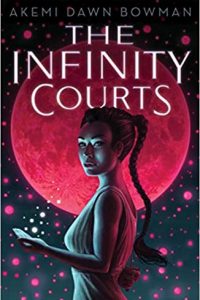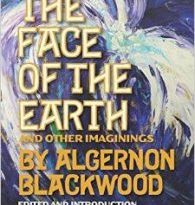Charles Payseur Reviews Short Fiction: Fantasy, Lightspeed, and F&SF
 Fantasy 8/22, 9/22
Fantasy 8/22, 9/22
Lightspeed 8/22, 9/22
F&SF 9-10/22
August’s Fantasy brought a number of works dealing with the power of stories and narratives, including the complex “The Tails that Make You” by Eliza Chan. Written in second person, you are a woman with tails, a huli jing, and though for some it can be a mark of pride and power, for you it is clouded with shame, trauma, and dread. The piece works backwards through time, touching on each moment a new tail appeared, and lingering on the ways those tails became symbols of perceived morality, availability, and identity. For some, the tails became invitations to action and violation, a reminder that justice is not equal for all – that there are some who are not protected, whose identities and bodies become a complicated battlefield on which others intrude. It’s strong and unsettling work by Chan, achingly captured.
Moving to the September issue, and K.S. Walker tells a story of separation and reunion in “How to Join a Colony of Sea-Folk, or Other Ways of Knowing”. In it, a woman has lost her partner, her love, and seeks to find them again. She’s too clever to embark on a doomed mission to retrieve them from the sea, however, and recognizing the power and dignity of the deity of the waters, she takes a different method instead, leaning on a grim magic that doesn’t have to be specific as much as it needs to be earnest and needful. Walker beautifully traces the space between land and sea, the tidal pool border where magic seeps up from below, and might offer a portal to a kind of happy ending. In poetry, Angel Leal writes a narrator giving advice on children who are… a bit different in “The Hole Is the Beginning”. It focuses on those children who are born with a drop of river in their veins which sets them apart and fills them with strange hungers. It stresses the importance on acceptance and understanding, even when that seems like embracing tragedy.
Lightspeed’s August brought with it “SyncALife” by Ruben Reyes Jr. (his first time in the publication), a story about a technology that promises to bring back the dead and one son wanting to have a different and healthier relationship with his recently deceased father. As he trains his “dad” in his new robotic body, and as he turns to sex work to pay the bills, the narrator begins to feel a new kind of satisfaction as his dad accepts more of him – his sexuality and relationship with another man. Not everything is perfect, though, and the narrator’s happiness hinges on a fragile olive branch stretched between the divide of life and death, weighted by the growing personality of his father in his new body. It’s a heartbreaking but ultimately freeing and beautiful work that Reyes pulls off with gripping and emotionally resonating prose. In “The Clockmaker and His Daughter”, Tobi Ogundiran weaves another story of grief and loss and family as a man living in an occupied city tries to care for his sick daughter. He remembers a time before the invasion, when their city was famous for a fruit that could cure anything – a fame that brought the attention of an invader. Desperate to help his daughter, he takes risks looking for any trace of the fruit, only to run against the cruel edge of colonization and oppression. It’s a grim story, but it leaves some hope in the form of stories that can’t be fully erased, and a magic that might still linger in the soil, and in the tears of those who love and lose.
Moving to September and there’s RJ Theodore’s very fun “The Application of Strawberry Lip Gloss in a Low-Gravity Environment”, about Gordon, a down-on-her-luck bounty hunter whofinds herself in a tight spot and agrees to take on a kind of adventure tourist for a six month contract. What starts as a bit of babysitting, however, turns into something much more serious when trouble (and Gordon’s ex) catch up with them. Theodore manages a lively mix of action, banter, and tight plotting for a piece that captures a spacefaring derring-do while populating the drama with memorable characters and a dazzling ending. It’s a story that makes me long for a big-screen adaptation (Hollywood, get on that).
The September/October issue of F&SF certainly captures the spirit of Halloween season, with a marked lean into grim themes, monsters, and horror. “In the Dream” by Meg Elison gets things started with a haunting science fiction tale about a mission to Mars and a technology that allows some people to stay awake at the expense of dedicated sleepers. It’s a technology that’s mostly routine at this point in its use, and yet something strange and unexpected happens when the sleeper is allowed to have a brief moment of waking. Elison evokes a sense of exploitation and drive that utterly falls apart at the touch of one moment of wonder and kindness when all the walls the crew and everyone else have built shatter at the touch of a dreamer. Lucas X. Wiseman makes an F&SF debut with “A Songstress in the Rain”, which stars Marleen, a half siren working in a speakeasy where she can sing – something just as illegal as the alcohol being served. But when one of her songs has an unforeseen consequence, things get tense and she has to live with the fallout. Wiseman does some strong world building, creating a setting where magic can’t dispel the grime or grit of the Prohibition era, and vulnerable communities have to come together to avoid ending up on the wrong side of either the corrupt laws or the waiting violence of desperate people. Charles Andrew Oberndorf crafts a deeply unsettling look at infection, tragedy, and horror in “The Cottage in Omena”. In it, Claire returns to a cottage where her husband died, the victim of a fungus that infects the brain and makes people want to drown… and that’s just to start. Oberndorf crafts not just a frightening situation, but a rather chilling glimpse at a possible future full of rampant viral threats, travel restrictions, and an even worse privatized medicine situation in the United States than exists now. Through an exploration of Claire’s guilt and anger and fear, the story approaches the idea of infection and even possession in wonderfully disturbing fashion.
Shifting to poetry, Dixon Chance has two poems in the issue, including a sharp take on horror with “The Halloween Zombie”. It’s a piece that looks at the difference between a fake zombie and a real one, between a person dressing up as something horrifying and the thing itself, and the cognitive and visceral distance between the two. The meeting described in the piece is harrowing and illuminating, showing that no mask can truly capture the power of a corpse, not only the true presence of death but its proximity at all times, waiting for some chance encounter on a shadowed sidewalk to make terrifying introductions. “When They Come for You” by Mary Soon Lee asks the reader a question about what they’d do in the face of something monstrous. Soon Lee complicates the question by complicating monstrosity, finding in it something repressed and shunned, a quality that is perhaps looking for comfort and understanding. The question is not so much about what the reader’s zombie plan is, so much as it is about recognizing Frankenstein’s mistakes and seeing a different way to respond when the monsters come.
Recommended Stories:
“SyncALife”, Ruben Reyes Jr. (Lightspeed 8/22)
“The Application of Strawberry Lip Gloss in a Low-Gravity Environment”, RJ Theodore (Lightspeed 9/22)
“The Cottage in Omena”, Charles Andrew Oberndorf (F&SF 9-10/22)
This review and more like it in the October 2022 issue of Locus.
 While you are here, please take a moment to support Locus with a one-time or recurring donation. We rely on reader donations to keep the magazine and site going, and would like to keep the site paywall free, but WE NEED YOUR FINANCIAL SUPPORT to continue quality coverage of the science fiction and fantasy field.
While you are here, please take a moment to support Locus with a one-time or recurring donation. We rely on reader donations to keep the magazine and site going, and would like to keep the site paywall free, but WE NEED YOUR FINANCIAL SUPPORT to continue quality coverage of the science fiction and fantasy field.
©Locus Magazine. Copyrighted material may not be republished without permission of LSFF.







